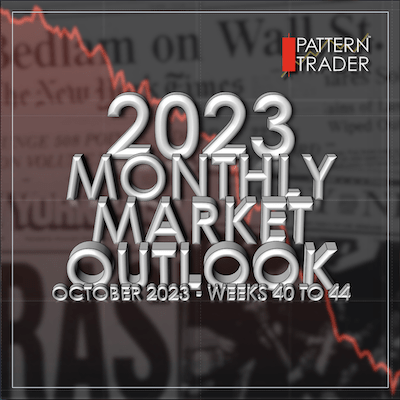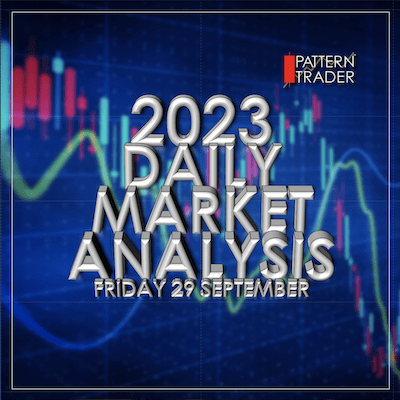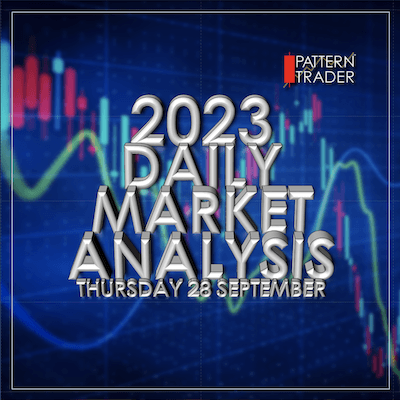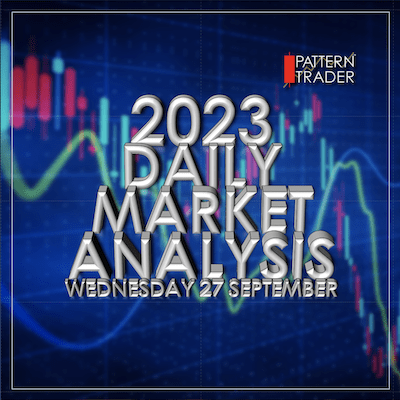This article was originally published in BTInvest in the Business Times on April 2015 (Riding The Rate).
This is an update on that report with all the latest prices and an outlook for 2016 to boot.
RIDING THE RATE (December 2015)
When I wrote the original article eight months ago in April, there had been a lot of talk about Deflation, Bubbles, Currencies, Oil and Greece (again). All these signs were pointing to an ailing global economy amongst which China recorded its slowest annual growth since 1990 at just 7.4 per cent in 2014. Since then, China’s growth has declined even further to 6.9% in the third quarter of 2015.
Crude’s price at that time was $44.00p/b was already hurting many economies with several nations falling into negative growth. Eight months later, Crude is trading below $37.00p/b and almost every other commodity is trading at multiyear lows.
Sweden, Denmark and Switzerland dropped their monetary policies into negatives and U.S. companies were issuing earnings warnings ahead of the Q2 earning season with the threat of an “earnings recession” in the making. They weren’t wrong.
Currently, with the low prices on most commodities, you’d expect economies to be booming and profits rising. But what we have instead is a real and present threat of Deflation.
Bubbles are another worry although analysts would say otherwise. In April 383 (76.6%) of the 500 S&P500 companies wore PE Ratios higher than 15. As of the close of 10 December 2015, 337 (67.4%) were above 15 but the overall average of the PEs were way higher than that of April.
Here is where the stats give you an idea of how much higher the overall average PEs are now … in April, 231 (46.2%) of the S&P500 companies were over 20 on their PEs. At the close of 10 December 2015, 233 (46.6%) of the S&P500 are over 20.
These stats are all higher than what we saw in August 2007 just before the Dow Jones Industial Average fell from 14,000 into Sub-Prime hell. As stats go, this is now the second biggest bubble in stock market history even surpassing that of 1999/2000.
Click here to read the full MarketWatch article: Stock are more overvalued now than at 2000 and 2007.
Treasury yields have stayed low in spite of the six-year bull run suggesting that the smart money is still largely tied up in safety rather than risk. The 10yr Treasury Yield fell from 3.5% in January 2009 to close at 2.24% on Thursday 10 December 2015.
This would explain why volumes in risk (equities) have been consistently falling away as the market ran higher between 2009 and 2014 in what has become the most prominent price-to-volumes divergence that I have ever seen.
By the end of 2014, volumes on the NYSE were averaging less than 1 billion daily.
Currencies are another concern. In March this year, the U.S. Dollar index topped 100. It topped 100 again at the start of December to complete a Double Top from which it has already fallen down to 97.76 at the time of writing. The last time it did that on the way up was ahead of the 1997 Asian Financial and 1998 Russian Financial Crises and on the way down after the Dot.com bubble burst in 2002.
The Dollar’s strength has brought the EUR/USD from 1.3927 down to 1.0463 and it hasn’t been able to break out above 1.14 since. The GBP/USD fell from 1.7166 down to 1.4635 and has been ranging between 1.47 to 1.57 for most of the year. The USD/JPY rose from 101.17 to 125.85 all within a year.
These currency fluctuations have done nothing to improve the stability of these countries. Instead, it has only exacerbated their deflationary woes.
The Ringgit has been the most spectacular performer of all the currencies in the world, with the USD hitting a high of 4.4560 and 3.1216 on the SGD in September.
Amidst all this chatter is one very volatile market that doesn’t seem to know where it should go from one day to the next. After 45 weeks of trading, the Dow Jones Industrial Average is in the red for the year and barely keeping its head above the 200DSMA.
Its no secret that I trust the Transports more than any of the benchmark indices and if you have been watching the transports, they are painting a very bleak picture ahead of 2016, much like what it did in 2007.
From The Noise, Clarity Emerges
Out of all the noise and confusion, there is one real opportunity on the near horizon that offers a really mouth-watering prospect. The chatter that is getting me excited is the promise of rising interest rates.
FOMC Chairwoman, Janet Yellen has been eager to start raising the Fed Fund Rate ever since she ended Ben Bernanke’s legacy of purchasing Mortgage Backed Securities at the end of 2014. Since then, she had broadly hinted at the possibility of raising rates in 2015. However, the effects of the strong U.S. dollar and the low price of Crude Oil has curtailed this move. Some speculators expected it to happen in July while others were mooting the move by the end of this year. Now as I write this we’re less than a week away from that announcement. In my opinion, this could be Yellen’s last window of opportunity to raise rates as she missed two really wonderful opportunities to do so in October and September this year.
So why does higher interest rates excite me?
There is a little known pattern that exists in the U.S. markets in relation to its monetary policy: As rates rise, so does the market in the same timeframe.
The blue areas on the chart clearly show that as the Fed Fund Rate increases (red chart, left Y-axis), the Dow Jones Industrial Average rallies.
The period between 1973 to 1983 was the exception as the U.S. went through a series of macroeconomic changes as a result of their unilateral termination of convertibility of the US dollar to gold, also known as the Bretton Woods Agreement of 1944. The U.S. dollar thereafter became a fiat currency. The “Nixon Shock” brought about various monetary policies around the world and currency wars erupted. The 1974 Oil Crisis, stagflation and the Great Inflation of the 70s and 80s made the model unreliable.
Normality seemed to have returned in 1983 as the trend reestablished its reliability again. By the 1990s the “normal” range of the Fed Fund Rate returned to around 3% on average.
After a massive easing program between July 13, 1990 and Sept 4, 1992 that brought the Fed Fund Rate down from from 8.00% to 3.00%, the then-Fed Chairman, Alan Greenspan began his tightening policy as he kept rates firm at 3% in 1993. By March 1995, Greenspan had tightened the rate to 6%.
The 10yr Treasury Yield had also resumed its convergent behavior with the Fed Fund Rate by rising in the same period.
Within that period, the Dow Jones Industrial Average ran from 3,450 to 4,150 for a gain of 20%.
The last rate hike was between May 2004 and June 2006. Greenspan famously raised the Fed Fund Rate 25bps each time from 1% to 5.25% in seventeen consecutive rate hikes over two years.
During that period, the 10yr Treasury Yield stayed above 4% and joined the hike towards the end of the run to peak at 5%.
And in the same timeframe, the Dow Jones Industrial Average rallied from 9,800 to 11,600 for an 18% gain in two years.
Keep It Simple
The investment strategy is a simple one with clear indications and targets. Eventually, when Janet Yellen announces that the Fed will be raising the Fed Fund Rate, I will be expecting a knee-jerk reaction that should send the market down into a short-term correction. This should be anywhere between two weeks and two months, depending on market conditions.
When the market returns into an uptrend with stronger volumes to support the trend, investors may choose to go long on either or both the SPDR DJIA ETF Trust (NYSE ARCA: DIA) or the SPDR S&P500 ETF Trust (NYSE ARCA: SPY), also known as the Diamonds and Spyders respectively.
Given that the Fed Fund Rate is now at 0%, it will be a rather lengthy hike to get it up to the average 3% or even the average high of 5% to 6% if warranted by then. This should give the investor ample time to get in on the ride, assuming Yellen doesn’t hike up in a hurry by 50bps, something not seen in 15 years. The average timeframe for hiking is around 18 to 24 months.
Once in for the ride, keep tabs on every FOMC meeting minutes. The Fed always makes broad hints as to when it will stop raising rates. They even broadcast their target rate and by which time they expect to hit that target. Those targets and timelines serve as good exit plans from your investment.
The more adventurous investors may choose to go long on more aggressive sectors such as industrials, transports, technology, materials, housing and finance. The ride could get bumpy along the way so watch earnings and macroeconomic news closely for any signs of oncoming long-term weaknesses in those sectors.
One common query regarding this correlation between rising rates and a rallying U.S. market is why should higher rates be good for the market?
It is a chicken-or-egg situation; the market rises and things get inflated so the Fed raises rates to combat this increase in inflation or the Fed inflates the value of the U.S. dollar so that corporate America sees higher profit margins being a buy-based economy.
Either way, in normal circumstances for a buy-based economy like the U.S., history has shown that a higher valued currency tends to stand the economy in good stead as higher profit margins equals better earnings and better earnings equals a bull market.
The only foreseeable downsides to this method of investing are:
- If deflation takes root in the U.S. economy. If so, we could be looking at a repeat of the 1973 to 1983 performance when monetary policy and market action became divergent and erratic.
- PE ratios go higher while revenues stagnate and force this bubble into a balloon. Given that companies have been actively buying back stock and deleveraging over the last two years, this should give their EPS some reprieve and keep PEs fair. However, that sort of quick fix without better revenues can never be sustained in the long run. So keep watching those fundamentals closely.
- If Crude stays below $40p/b while the dollar hovers above 90 on the index, this could have a devastating long term effect on the economy as jobs dry up in the Oil industries amidst a slowing global economy and U.S. exporters lose out in the global marketplace due to its high currency value. This will inevitably turn the U.S. GDP negative.
As much as I love this pattern, there is always more than meets the eye when it comes to putting your money on the line. Consider all the possibilities and measure your risk carefully. There are currently more reasons to be bearish than bullish. I will wait patiently for a sizeable correction before I consider buying into rising Fed Fund Rates.
2016 Outlook
Assuming Janet Yellen raises the Fed Fund Rate in December (or any other month thereafter), I would expect a knee-jerk reaction to follow in the equity space. Stocks should sell down anyway given the bubble they’re in so this may not be a bad thing and is something Yellen would have anticipated. The sell down could get very nasty. It would not be too far fetched to call a 35% correction. This would bring the DOW down to 11,200 from where it currently is and the S&P should see downside to 1,320.
Yes, I know what you’re saying and you can bet that I am used to it by now. But the irony is that I always make a call that everyone thinks is crazy and when the market eventually makes that dive, I’m not the one going crazy with fear.
Preceding that drop, watch for for bond yields to fall and the curve should flatten. I am going to stick my neck out and call for an inversion on the curve within Q1 of 2016.
My worst case scenario is a 45% correction if we get an inversion on the curve. However, given the Fed’s easy trigger on the printing press, I reckon they’ll curb the fear before it gets there.
By the end of Q3, we should see the worst the market can offer. If Yellen sticks to her December plan, the rate would be up to 1.25% by the end of Q2 given that she’ll have five Fed meetings to get it up there with a 25bps hike at each meeting. The fear will come to a head by Q3 where I suspect the market will bottom into Q4.
2016 is an Olympic year for which there has never been a loss since the end of WWII. It is also Election Year which means that the market could recover some of those losses in Q4 when the Elections hit fever pitch. This could drive the market up quickly and close out the year without a loss to keep the Olympic record going. For this to happen, watch for a flight to quality at the start of November. Bond yields should start rising rapidly by then.
However, that might not be the end of that nightmare. A lot will depend on how commodities react to all this. Personally, I am not optimistic. If commodities stay cheap, we could see more pain return as we trudge into 2017. If commodity prices suddenly spike to record highs, we’re looking at inflationary prices amidst poor growth/deflation. That too is not far fetched considering we’re expecting one of the worst El Nino conditions to hit this planet in 2016. That could well hit crops and create massive shortages in Q3.
The Fed Fund Rate hikes should return the equity space into a rally by Q4 (elections) and into 2017 if by some miracle, El Nino is merciful and commodity prices return into a decent uptrend based on demand and not shortages. Crude should stay rooted between 40.00 and 60.00 till 2017. Agriculture based issues should drive the recovery as will the return of metal based issues. Watch the miners for leads.
The main cause for concern on the street (everywhere in the world) is that liquidity will dry up. As it is now, liquidity is always drying up as we see businesses scaling down and job cuts become more and more common. Sales-based businesses are already targeting the middle to lower income earners as liquidity at the top income earners have long dried up (having parked their monies in long term fixed income safety).
The worst that will happen is that individuals and families who are over-leveraged on debt and businesses that have become too addicted to easy and cheap money will get hurt the most. It is already happening and it will worsen as the rot spreads upwards.
Summary
Some time in mid 2014, I called for a three-year slide on the US economy. At this point in time, it looks like we’ve completed the first of those three years. Now it looks very much like 2000 to 2003 repeating itself. So if I am right, the pain is only just beginning.
Not the best way to spread good cheer during this festive season. It’s not what I wanted too. But the truth is that we’d better enjoy ourselves as much as we can this Christmas because if I am right, a lot of us won’t be having a happy 2016.
Happy Hunting!
















